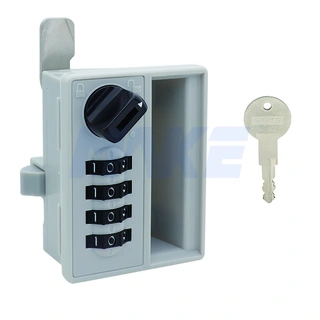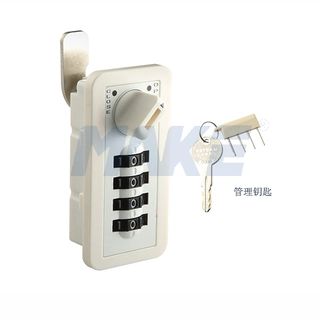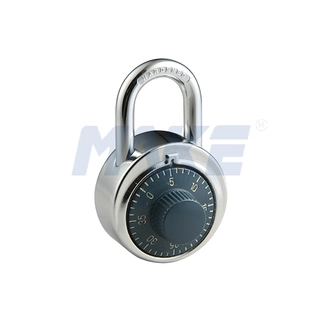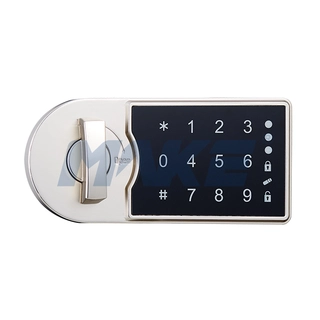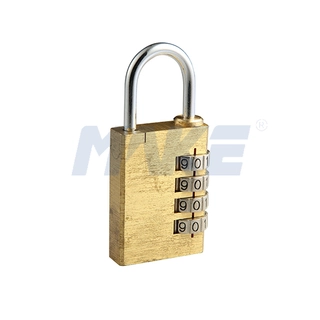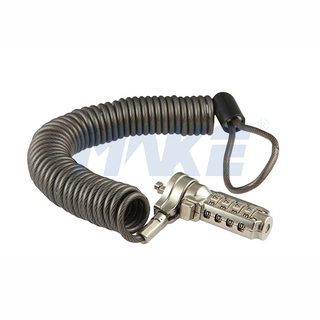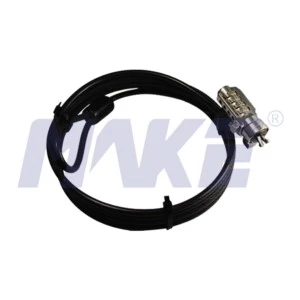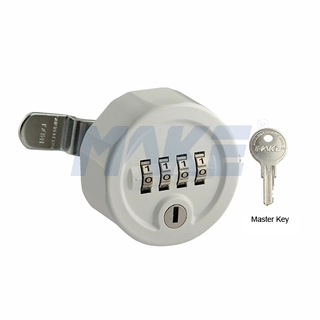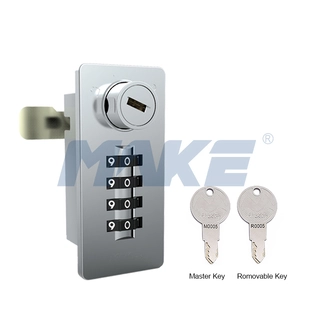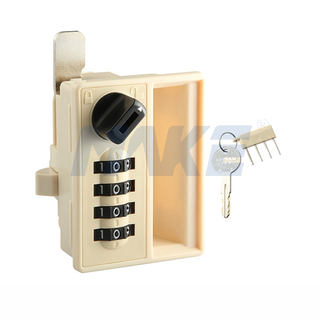Combination locks have long been a popular and reliable means of securing personal and commercial property. Unlike traditional locks that require keys, combination locks rely on a sequence of numbers or symbols to open. This keyless functionality not only adds convenience but also enhances security by eliminating risks associated with key loss or duplication.
From securing lockers and cabinets to protecting safes and luggage, combination locks are used in a wide variety of applications. With advancements in both mechanical and electronic designs, these locks continue to evolve, offering enhanced features and flexibility for users across the globe.
A combination lock is a security device that requires a specific sequence of inputs—usually numbers or symbols—to open. Instead of depending on a key, which can be easily lost, stolen, or copied, these locks operate based on a preset combination. When the correct code is entered, internal mechanisms align, disengaging the lock and allowing access.
Combination locks are widely used in educational institutions, gyms, offices, warehouses, and even on travel gear. They offer a secure and convenient solution for those seeking reliable access control without the hassle of keys.
Combination locks come in various designs, each tailored to different use cases. The most common types include:
These are the traditional models with a rotating dial. Users spin the dial clockwise and counterclockwise to align a series of numbers. Typically, rotary locks require a three- or four-digit combination. They are commonly used in school lockers and gym facilities.
Often used for lockers, gates, or chains, these padlocks feature a rotating dial or multiple wheels that must be aligned to open the shackle. They're portable, reusable, and convenient for securing personal belongings.
These modern locks replace mechanical dials with digital keypads. Users enter a numeric code to gain access. Found in homes, offices, and safes, electronic locks often come with advanced features such as programmable codes, backlit keypads, and battery-powered operation.
Today's combination locks incorporate several features to enhance both usability and security:
Many locks allow users to change the combination as needed for added flexibility.
In emergencies, authorized personnel can override the code using a master key.
Some models allow users to retrieve the code with a master key if the password is forgotten.
If the master key is lost, the core can be replaced without damaging the lock.
Designed to suit a wide range of materials and door thicknesses (0.6–20 mm), including metal, wood, glass, and plastic.
These features make modern combination locks suitable for both residential and commercial applications.
Combination locks are ideal for securing:
Lockers (schools, gyms, and workplaces)
ABS cabinets and storage units
Metal and wooden cabinets
Luggage and travel gear
Residential and commercial doors
At MAKE Lock, a leading combination lock manufacturer in China, models are available with more than 10,000 possible key combinations, offering enhanced customization to meet varied security and access control needs.
The operation of a combination lock depends on its design:
Inside a rotary combination lock, a series of wheels or cams are connected to the dial. As the user turns the dial to specific numbers in the correct sequence, the notches in the wheels align. Once aligned, the locking mechanism disengages, allowing the lock to open.
Digital locks use an electronic circuit to verify the entered code. When the correct sequence is input via the keypad, the electronic controller sends a signal to release the locking mechanism. Some models may offer multiple user codes, lockout features, or battery backup for enhanced reliability.
One of the most significant advantages of a combination lock is that it doesn’t require a physical key. This eliminates the risk of losing or duplicating keys, providing greater peace of mind.
Many combination locks, especially digital versions, allow users to change the code as needed. This is especially useful in shared or changing environments such as gyms, schools, or rental properties.
Compared to biometric or high-end smart locks, mechanical and basic digital combination locks are relatively affordable while still offering reliable protection.
Combination locks are often compact and portable, making them suitable for a wide range of applications from luggage to lockers to cabinets.
Most mechanical locks are built to withstand frequent use and exposure to the elements, making them ideal for both indoor and outdoor use.
To ensure your combination lock remains secure and functions smoothly over time, follow these maintenance tips:
Dust, dirt, and grime can accumulate inside the mechanism. Wipe the lock regularly with a dry cloth to keep it clean.
Apply dry silicone spray or graphite powder to the internal components. These lubricants do not attract dirt like oil-based products do, reducing the risk of clogging.
Check for signs of wear, rust, or jamming. Early detection of issues helps prevent lock failure and ensures security is maintained.
Even high-quality combination locks can occasionally experience issues. Here are some common problems and how to resolve them:
This is one of the most common issues. If your lock has a master key function or recovery tool, follow the manufacturer’s instructions to retrieve or reset the code. If not, contact the manufacturer or consider replacing the lock.
Dirt or moisture may cause internal parts to stick. Apply a non-oily lubricant and gently work the lock to free up the mechanism.
Always make sure the numbers are correctly aligned before attempting to open. On electronic models, be mindful of any lockout features that activate after several incorrect attempts.
While combination locks are generally secure, users must take steps to avoid common vulnerabilities:
Don’t use birthdays, anniversaries, or simple sequences like “1234.” Choose a random and complex combination that is difficult to guess.
Limit access to the code to only trusted individuals. Changing the combination regularly can further enhance security, especially in shared environments.
Write your combination down and store it in a safe location away from the lock itself. Avoid taping it to the item you’re securing.
Yes—when used correctly, combination locks are a safe and effective security solution. High-quality models are designed to resist tampering, prying, and forced entry. Digital models offer additional safeguards such as lockout modes and multiple user access codes.
However, the level of security also depends on user behavior. Selecting a strong, unique combination and regularly maintaining the lock are essential for long-term safety.
Combination locks offer a smart and convenient solution for keyless security. Whether you’re securing personal belongings in a locker or protecting valuable equipment in an office or industrial setting, combination locks provide flexibility, ease of use, and reliable performance.
With models ranging from traditional dial locks to advanced electronic systems, users can choose a solution that fits their exact needs. When maintained properly and used with strong combinations, combination locks offer excellent protection for a wide range of applications.
For enhanced customization, security features, and dependable quality, MAKE Lock—a leading combination lock manufacturer from China—provides a wide variety of options to suit every access control scenario.
11 results

